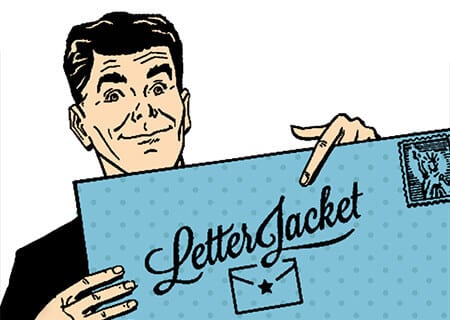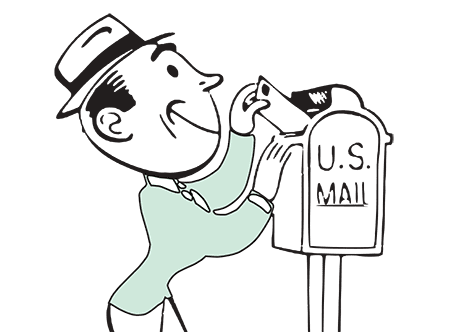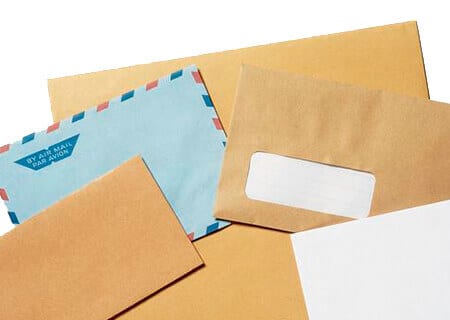Correct Envelope Size for Mailing | Letter Jacket Envelopes
Choosing the correct envelope size may seem like a small detail, but it plays a major role in simplifying your mailing process. Using the right size ensures your documents remain intact, reduces postage costs, and avoids delays. Whether you’re sending professional documents or personal letters, making an informed choice saves you frustration and money.
Why Choosing the Correct Envelope Size is Essential
Your envelope isn’t just packaging; it’s part of your first impression. Picking the right size benefits your mailing in several ways:
- Lower Costs: Standard-size envelopes qualify for lower rates. If your envelopes are too large or “non-machinable,” you’ll incur extra charges.
- Professional Appearance: Avoid cramming documents into small envelopes or leaving excess space in large ones. A perfect fit keeps things neat and sharp.
- Hassle-Free Delivery: Envelopes within postal size standards process more smoothly, with fewer delays or manual handling fees.
Popular Envelope Sizes for Everyday Mailing
Below are common standard sizes that ensure cost-effective and efficient mailing.
#10 Envelope (4.125 x 9.5 inches)
The most common choice for letters, invoices, and folded letter-sized documents. Often paired with a #9 reply envelope, which fits inside and comes pre-addressed for easy returns.
9 x 12-inch Envelope
This size is perfect for larger documents that need to lie flat, such as contracts, brochures, or work portfolios.
10 x 13-inch Envelope
Great for bulky items like catalogs or magazines. While larger than standard envelopes, its dimensions often stay within postal flat rate guidelines.
A2 or A7 for Cards and Invitations
Smaller sizes (like A2 at 4.375 x 5.75 inches or A7 at 5.25 x 7.25 inches) work best for greeting cards or event invitations, giving your mail a personal touch.
How to Measure Your Documents for the Correct Envelope Size
Accuracy is key when selecting the correct size. Here’s how to measure your mail with precision:
- Length and Width: Lay your document flat and use a ruler to get exact dimensions.
- Thickness: The maximum for standard mail is 0.25 inches; anything thicker may be classified as non-machinable or a parcel, increasing postage costs.
- Snug Fit: Leave a little space to ensure easy insertion without excess room that could cause shifting.
Choosing correctly helps avoid extra costs and keeps your mail clean and professional.
How do I choose the correct envelope size for my documents?
To choose the correct envelope size, measure your document’s length, width, and thickness. Match these dimensions with standard envelope sizes for a snug, secure fit that adheres to postal guidelines.
Envelope Size Impacts on Postage Costs
Envelope size directly influences how much you’ll spend on postage. Here’s how to keep it under control:
- Standard Envelopes: Sizes like the #10 qualify for the lowest first-class rates.
- Oversized or Bulky Mail: Heavier or larger-than-standard documents require flat or parcel rates. Even rigid or oddly shaped envelopes can cost extra.
Understanding these categories helps you save while ensuring your mail arrives intact. For full postage cost details, check the USPS Pricing Guide.
Eco-Friendly Options for Sustainable Mailing
Sustainability in mailing is easier than you think. Consider these eco-conscious envelope options:
- Recycled Materials: Envelopes made from post-consumer waste are cost-effective and environmentally friendly.
- Compostable Envelopes: Choose biodegradable options like kraft paper, which is ideal for reducing landfill waste.
- Reusable Envelopes: Use reinforced designs multiple times to reduce single-use materials.
Switching to eco-friendly options allows you to mail smarter while moving toward a greener future.
FAQs About Correct Envelope Sizes and Mailing
Q: Can I use larger envelopes for smaller documents?
A: While it’s possible, it’s not recommended unless necessary. Larger envelopes tend to cost more in postage, so using the smallest suitable size is more economical.
Q: Are eco-friendly envelopes more expensive?
A: They can be marginally more expensive, but the environmental benefits and brand value often outweigh this small increase.
Q: How can I ensure my mail isn’t rejected or delayed?
A: Ensure your envelope meets postal size and thickness guidelines for standard processing. Proper sealing and labeling also help.
Streamline Your Mailing with the Right Envelope
When it comes to document safety and cost savings, choosing the correct envelope size is one of the simplest yet most impactful steps. From saving money on postage to delivering a professional impression, your choice of envelope matters.
At Letter Jacket Envelopes, our expertise lies in offering cost-effective, efficient solutions to improve your everyday mailing. Explore our comprehensive catalog of envelopes, or contact our team for guidance on which size works best for your needs. Reach out today via email or phone—we’re always here to help!
Key Takeaways
- Using the correct envelope size reduces mailing costs and ensures quick delivery.
- Standard sizes like #10, 9 x 12, and 10 x 13 cover most postal needs.
- Measuring your mail is essential for choosing a snug fit that follows postal guidelines.
- Eco-friendly options like recycled or compostable envelopes help the planet while keeping your mail functional.
- Adhere to postal size and weight standards to avoid unexpected delays or charges.
Follow these steps to make sure your mail always looks sharp, stays green, and saves you money.



